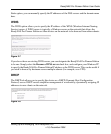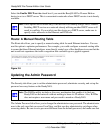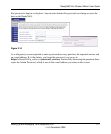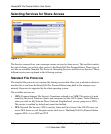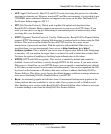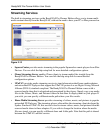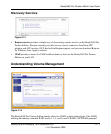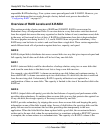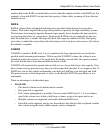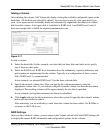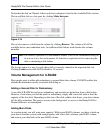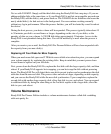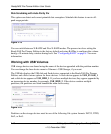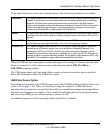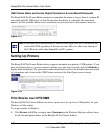
ReadyNAS Pro Pioneer Edition User Guide
Setting Up and Managing Your ReadyNAS Pro 2-13
v1.0, December 2008
smallest disk in the RAID set multiplied by one less than the number of disks in the RAID set. For
example, a four-disk RAID 5 set provides the capacity of three disks, assuming all four disks are
identical in size.
RAID 6
RAID 6 (striped disks with dual distributed parity) provides fault tolerance from two drive
failures. This makes larger RAID groups more practical, especially for high availability systems.
This becomes increasingly important because large-capacity drives lengthen the time needed to
recover from the failure of a single drive. Single parity RAID levels are vulnerable to data loss
until the failed drive is rebuilt: the larger the drive, the longer the rebuild will take. Dual parity
gives time to rebuild the array without the data being at risk if one drive, but no more, fails before
the rebuild is complete.
X-RAID2
X-RAID2 is similar to RAID level 5, as it is optimized for large sequential access for the best
possible media streaming performance. With a one-disk X-RAID2 volume, the volume is non-
redundant and has the capacity of the single disk. By adding a second disk, the capacity remains
the same, but the data is now mirrored between the two disks.
X-RAID2 will automatically expand when as little as two of your disks have extra capacity. Your
data volume can keep growing every time you add a larger disk after that. It’s as simple as that. X-
RAID2 lets you do this without reformatting your disks and shuffling your data back and forth.
The process occurs in the background, so access to the ReadyNAS Pro Pioneer Edition is not
interrupted.
There are advantages to both technologies.
•Flex-RAID:
– The default volume can be deleted and re-created.
– Hot spare disk is supported.
– Full volume management is available. You can create RAID level 0, 1, 5, or 6 volumes,
specify the volume size, delete a disk from a volume, assign a hot spare, and so on.
– Multiple volumes are supported, each with a different RAID level.
– Each disk can be replaced, one by one, then rebuilt; after the last disk is replaced, another
data volume using the newly added capacity can be configured.



